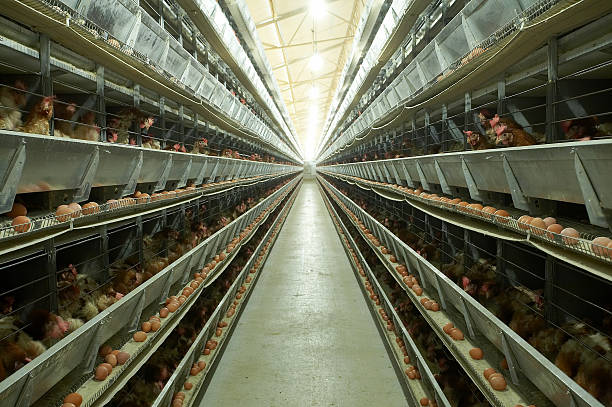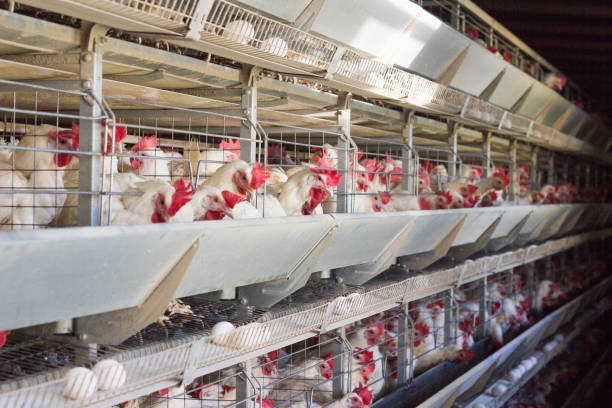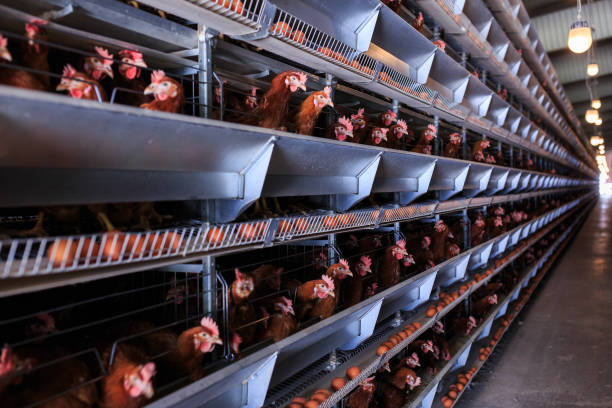
Poultry Farm Success in South Africa: Essential Tips and Best Practices
Poultry Farm Success in South Africa: Essential Tips and Best Practices
South Africa’s poultry industry is a vibrant and growing sector, contributing significantly to the nation’s economy and food security. However, achieving success in this competitive landscape requires more than just a flock of chickens. It demands a deep understanding of best practices, meticulous planning, and a dedication to efficient management. Whether you’re a seasoned poultry farmer or just starting out, this comprehensive guide will provide you with essential tips and strategies to maximize your farm’s profitability and sustainability in the South African context.
**1. Planning and Preparation: Laying the Foundation for Success**
Before even acquiring your first chick, thorough planning is paramount. This involves a detailed assessment of your resources, market opportunities, and long-term goals.
* **Market Research:** Understand the demand for poultry products in your target market. Identify potential buyers, including retailers, restaurants, and local communities. Analyze competitor pricing and product offerings to determine your competitive edge. South Africa has a diverse consumer base, so tailoring your product to specific market niches, such as free-range eggs or organically raised broilers, can be a lucrative strategy.
* **Business Plan Development:** A well-structured business plan is your roadmap to success. It should outline your mission, vision, objectives, and strategies. It should also include detailed financial projections, covering start-up costs, operating expenses, and revenue forecasts. Include contingency plans to address potential risks, such as disease outbreaks or fluctuating feed prices. Seek guidance from agricultural consultants or business advisors to refine your business plan.
* **Site Selection:** Choose a location that is suitable for poultry farming. Consider factors such as access to water, electricity, and transportation. Ensure the site is well-drained and free from environmental hazards. Check local zoning regulations and obtain necessary permits and licenses. Proximity to feed suppliers and processing facilities can also significantly reduce transportation costs.
* **Financial Planning:** Secure adequate funding for your poultry farm. Explore various financing options, including bank loans, government grants, and private investors. Develop a robust financial management system to track income and expenses accurately. Implement cost-saving measures without compromising the quality of your product.
**2. Selecting the Right Breed: Matching Bird to Market**
Choosing the right breed is crucial for optimizing productivity and profitability. Different breeds have different characteristics, such as egg-laying capacity, growth rate, and disease resistance.
* **Layer Breeds:** For egg production, consider breeds like the Lohmann Brown, Hy-Line Brown, or ISA Brown. These breeds are known for their high egg-laying rates and efficient feed conversion. Research the specific characteristics of each breed and select one that aligns with your production goals and market requirements. Also, investigate breeds suitable for free-range systems if that is your intent.
* **Broiler Breeds:** For meat production, breeds like the Cobb 500, Ross 308, or Arbor Acres are popular choices. These breeds are bred for rapid growth and high meat yield. Consider factors such as feed conversion ratio, carcass quality, and resistance to common poultry diseases. Experiment with different breeds to determine which performs best under your specific farming conditions.
* **Dual-Purpose Breeds:** If you’re aiming for both egg and meat production, consider dual-purpose breeds like the Rhode Island Red or Plymouth Rock. These breeds are more versatile but may not be as specialized as layer or broiler breeds. These are often better suited to smaller scale operations where flexibility is key.
**3. Housing and Equipment: Creating a Comfortable and Efficient Environment**
Providing a comfortable and safe environment is essential for the health and productivity of your poultry.
* **Housing Design:** Construct poultry houses that provide adequate space, ventilation, and protection from the elements. Consider both open-sided and closed housing systems, depending on your climate and budget. Ensure proper insulation to regulate temperature and prevent drafts. Implement biosecurity measures to prevent the spread of diseases.
* **Cages vs. Deep Litter:** Decide between cage systems and deep litter systems based on your production goals and welfare considerations. Cage systems offer higher stocking densities and easier egg collection, but may raise welfare concerns. Deep litter systems provide more space for movement and natural behaviors but require more management. In South Africa, there is increasing consumer demand for cage-free eggs, which may influence your choice. Consider using automated cage systems which increase efficiency and reduce labor costs. Battery cages, A-Type cages and H-Type cages, all provide optimal ventilation, lighting, and easier waste management.
* **Essential Equipment:** Invest in high-quality equipment, including feeders, drinkers, and ventilation systems. Ensure adequate water supply and proper drainage. Install lighting systems to regulate egg production in layer hens. Use automated feeding and cleaning systems to improve efficiency and reduce labor costs.
**4. Feed and Nutrition: Fueling Optimal Growth and Production**

Proper nutrition is vital for the health, growth, and productivity of your poultry.
* **Balanced Diets:** Provide a balanced diet that meets the specific nutritional requirements of your poultry. Use commercially available poultry feeds or formulate your own feed rations under the guidance of a nutritionist. Ensure adequate protein, energy, vitamins, and minerals in the diet. Consider supplementing with locally available ingredients to reduce feed costs.
* **Feed Management:** Implement proper feed management practices to minimize waste and prevent contamination. Store feed in a dry, cool place away from rodents and pests. Provide clean and accessible feeders to ensure all birds have access to food. Monitor feed intake and adjust feeding levels based on the age, breed, and production stage of your poultry.
* **Water Quality:** Provide access to clean and fresh water at all times. Regularly clean and disinfect water troughs or nipples to prevent the growth of bacteria and algae. Monitor water quality and test for contaminants such as bacteria, heavy metals, and pesticides.
**5. Health Management: Protecting Your Investment**
Preventing and controlling diseases is crucial for minimizing losses and maintaining productivity.
* **Biosecurity Measures:** Implement strict biosecurity measures to prevent the introduction and spread of diseases. Restrict access to the poultry farm and require visitors to wear protective clothing. Disinfect vehicles and equipment entering the farm. Implement a rodent and pest control program.

* **Vaccination Programs:** Develop and implement a comprehensive vaccination program to protect your poultry from common diseases. Consult with a veterinarian to determine the appropriate vaccines for your region and breed. Administer vaccines according to the manufacturer’s instructions and maintain accurate records.
* **Disease Monitoring:** Regularly monitor your flock for signs of illness, such as reduced feed intake, lethargy, respiratory distress, or diarrhea. Consult with a veterinarian promptly if you suspect a disease outbreak. Implement quarantine measures to isolate sick birds and prevent the spread of infection.
**6. Waste Management: Environmental Responsibility**
Proper waste management is essential for protecting the environment and maintaining a clean and healthy farm.
* **Manure Handling:** Develop a plan for managing poultry manure effectively. Compost manure to produce a valuable fertilizer for crops. Use manure as a source of biogas for energy production. Dispose of manure responsibly to prevent water and soil contamination.
* **Odor Control:** Implement measures to control odors on your poultry farm. Use proper ventilation systems to remove ammonia and other gases. Add odor-absorbing materials to litter or manure. Plant trees and shrubs around the farm to act as windbreaks and absorb odors.
* **Water Conservation:** Implement water conservation measures to reduce water usage and minimize environmental impact. Collect rainwater for use in cleaning and irrigation. Use efficient watering systems that minimize water waste.
**7. Marketing and Sales: Reaching Your Target Market**
Effective marketing and sales strategies are crucial for maximizing profitability.

* **Branding:** Develop a strong brand identity for your poultry farm. Create a logo, website, and marketing materials that communicate your values and product quality. Differentiate your products from competitors by emphasizing unique features such as free-range production, organic certification, or local sourcing.
* **Sales Channels:** Explore various sales channels, including direct sales to consumers, sales to retailers, and sales to restaurants and hotels. Participate in local farmers’ markets and agricultural shows to promote your products. Consider selling online through e-commerce platforms.
* **Customer Service:** Provide excellent customer service to build loyalty and generate repeat business. Respond promptly to customer inquiries and complaints. Offer high-quality products and competitive pricing.
**8. Continuous Learning and Improvement: Staying Ahead of the Curve**
The poultry industry is constantly evolving, so it’s important to stay abreast of the latest trends and best practices.
* **Industry Associations:** Join industry associations such as the South African Poultry Association (SAPA) to network with other poultry farmers and access valuable resources. Attend industry conferences and workshops to learn about new technologies and management techniques.
* **Research and Development:** Conduct research and development to improve your production practices and product quality. Experiment with new breeds, feed formulations, and housing systems. Collaborate with agricultural researchers and extension officers to access the latest scientific knowledge.
* **Record Keeping:** Maintain accurate records of all aspects of your poultry farm, including production data, financial information, and health records. Analyze your records regularly to identify areas for improvement. Use data-driven decision-making to optimize your farm’s performance.
**9. Labor Management: Building a Strong Team**
Effective labor management is essential for ensuring the smooth operation of your poultry farm.
* **Training:** Provide adequate training to your employees on all aspects of poultry farming, including animal husbandry, health management, and biosecurity. Invest in ongoing training to keep your employees up-to-date on the latest best practices.
* **Compensation and Benefits:** Offer competitive wages and benefits to attract and retain qualified employees. Create a positive work environment that fosters teamwork and collaboration.
* **Safety:** Prioritize safety in the workplace and provide employees with the necessary safety equipment and training. Implement safety procedures to prevent accidents and injuries.
* **Motivation:** Motivate and incentivize employees and recognize their contributions to enhance productivity and morale.
Success in the South African poultry industry requires a combination of hard work, dedication, and a commitment to best practices. By implementing these tips and strategies, you can increase your farm’s profitability, sustainability, and overall success. The key is to be adaptable to changing market conditions, embrace innovation, and prioritize the health and welfare of your poultry.
